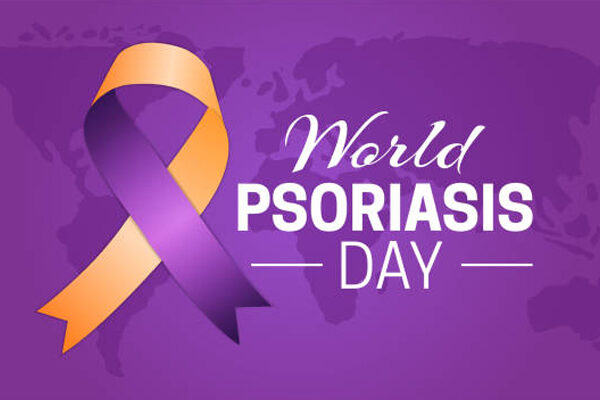
Skin conditions that affect pigmentation often lead to confusion and misdiagnosis. Among them, albinism vs vitiligo are two distinct disorders that impact skin color but arise from completely different causes. While both result in lighter or white patches on the skin, understanding the difference between vitiligo and albinism is crucial for accurate diagnosis, treatment planning, and patient support.
Understanding Albinism Vs Vitiligo
Albinism is a rare, inherited genetic condition that affects the production of melanin, the pigment responsible for skin, hair, and eye color. People with albinism are born with little to no melanin, leading to very pale skin, light-colored hair, and vision problems. Since it is genetic, albinism is present from birth and remains throughout life.
Vitiligo, on the other hand, is an acquired autoimmune condition where the immune system mistakenly attacks melanocytes (the cells that produce melanin). This results in progressive loss of pigmentation, appearing as irregular white patches on the skin. Unlike albinism, vitiligo develops later in life and often progresses over time.
Causes: Genetic vs Autoimmune
One of the most important aspects in distinguishing albinism vs vitiligo is the underlying cause.
| Albinism | Vitiligo |
|---|---|
| This is caused by genetic mutations affecting melanin production. | An autoimmune disorder where the body attacks its own pigment-producing cells. |
| Inherited in an autosomal recessive manner, meaning both parents must carry the gene. | It can be triggered by genetic predisposition, oxidative stress, or environmental triggers such as sunburn or emotional stress. |
| Present from birth and does not develop due to lifestyle or environmental factors. | Progresses over time, with new white patches appearing in different areas of the body. |
This distinction highlights the difference between vitiligo and albinism, one is inherited, while the other is acquired.
Also Read: Is Vitiligo Hereditary or Genetic
Symptoms: What Does Albinism Look Like vs Vitiligo
What does albinism look like?
Albinism affects more than just the skin. People with albinism typically have:
- Very pale skin tone that does not tan.
- Light blonde, white, or reddish hair.
- Blue, gray, or very light-colored eyes.
- Vision problems, including sensitivity to light and reduced sharpness.
Unlike vitiligo, the lack of pigment is uniform across the body.
What does vitiligo look like?
- Irregular, patchy white spots on the skin.
- Commonly appears on sun-exposed areas, such as hands, face, and arms.
- Patches may spread gradually over time.
- Hair in the affected areas may also turn white.
This is why patients often ask how to differentiate between vitiligo and other white patches. The answer lies in the pattern and progression. Vitiligo is patchy, often symmetrical, and develops after birth, while other conditions (like fungal infections or eczema) may have different textures, symptoms, or timelines.
Also Read: Is Vitiligo Considered a Disability?
Key Differences: Albinism Vs Vitiligo
While both conditions involve pigmentation loss, the difference between vitiligo and albinism can be summarized as follows:
-
Onset
- Albinism: Present from birth.
- Vitiligo: Develops later, often in childhood or early adulthood.
-
Distribution
- Albinism: Uniformly pale skin, hair, and eyes.
- Vitiligo: Patchy white spots, often asymmetrical.
-
Cause
- Albinism: Genetic mutation leading to absent/reduced melanin.
- Vitiligo: Autoimmune destruction of melanocytes.
-
Other Symptoms
- Albinism: Vision problems, sensitivity to sunlight, higher risk of skin cancer.
- Vitiligo: No vision problems, but psychological impact due to visible patches.
Understanding these points helps clarify albinism and vitiligo differences for accurate diagnosis and support.
Diagnosis and Medical Evaluation: Albinism Vs Vitiligo
Diagnosing Albinism:
Doctors diagnose albinism through genetic testing, physical examination, and an evaluation of symptoms like vision impairment. Since it is genetic, a family history may also provide clues.
Diagnosing Vitiligo:
- Skin examination by a dermatologist.
- Use of a Wood’s lamp (ultraviolet light) to highlight depigmented areas.
- Sometimes, a skin biopsy confirms loss of melanocytes.
- Blood tests may be done to check for other autoimmune conditions like thyroid disorders.
- Differentiating vitiligo from other white patches (such as tinea versicolor or post-inflammatory hypopigmentation) requires careful clinical evaluation.
Treatment and Management: Albinism Vs Vitiligo
While neither condition can be completely cured, treatments focus on improving quality of life and managing symptoms.
-
Albinism Management
- Sun protection with high-SPF sunscreen and protective clothing.
- Regular eye checkups and visual aids.
- Skin cancer screening due to higher risk from UV exposure.
-
Vitiligo Treatment
- Topical corticosteroids or calcineurin inhibitors to slow pigment loss.
- Phototherapy (light treatment) to stimulate melanocytes.
- Depigmentation therapy in severe cases to even out skin tone.
- Psychological support, as vitiligo can significantly impact self-esteem.
Although albinism and vitiligo share visible skin changes, their treatment approaches are entirely different because of the distinct causes. If you or someone you know is suffering from vitiligo, they can consider enrolling in clinical trials being conducted across Michigan.
Conclusion
The confusion between albinism vs vitiligo arises because both conditions affect pigmentation, but they are fundamentally different. Albinism is a genetic disorder present from birth, leading to uniformly pale skin, hair, and eye color along with vision challenges. Vitiligo, however, is an autoimmune condition that develops later in life, causing patchy white spots on the skin. Recognizing the difference between vitiligo and albinism ensures accurate diagnosis, tailored treatment, and better patient outcomes.
By understanding what albinism looks like, how vitiligo progresses, and how to differentiate between vitiligo and other white patches, individuals can seek appropriate medical guidance and support. Early diagnosis, protective measures, and compassionate care remain essential in managing both conditions and improving quality of life.





